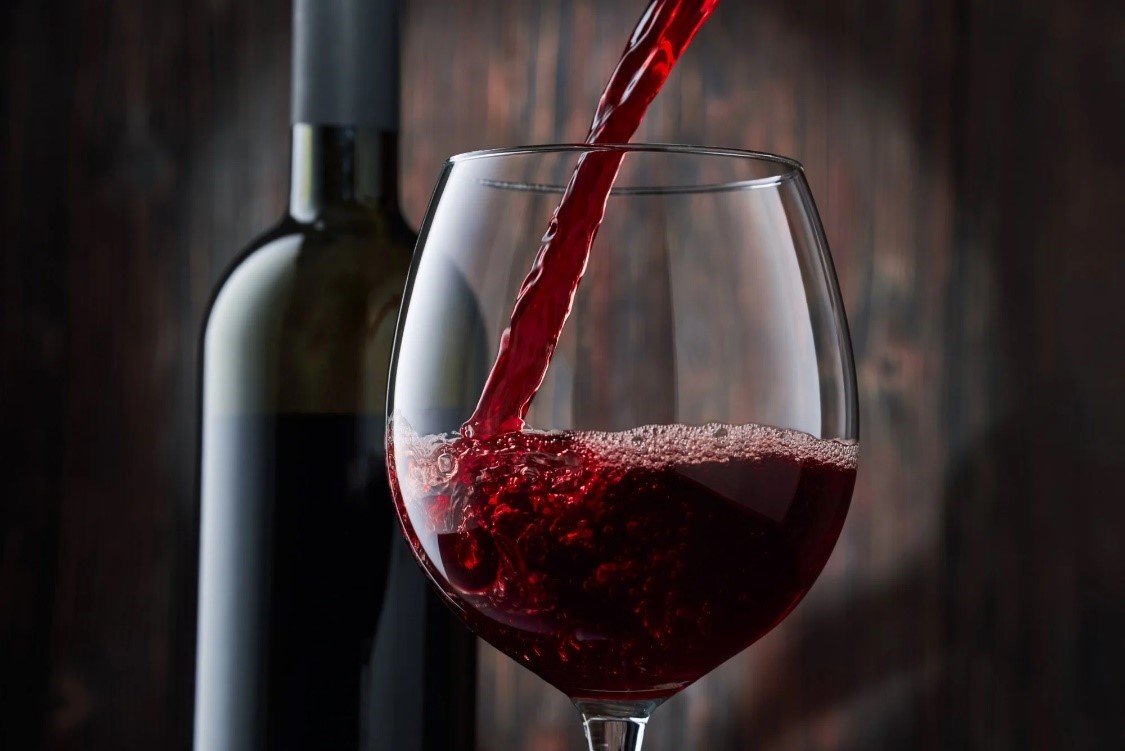
When grapes, art, and science band together, they embark on an adventure that resembles no other. All they need is time, and the result will always be fine, the secret behind every joyful gathering is a bottle of wine.
Just as autumn heaves into view, vineyards teem with activity celebrating the arrival of harvest season. Grapes are picked and crushed. Then, fermentation takes place, a process where yeast transforms sugar into alcohol. Clarification comes next to remove any impurities from the grape juice. Wine is aged at a temperature ranging from 10 °C to 15 °C in different types of vessels and containers. Filtered, then bottled, wine becomes ready to hit the shelves!
Known for its wealth of types, wine never fails to satisfy everyone’s taste buds. For fans of heavy and complex flavors, red wine is the perfect pick. The pillar of red wine and the secret behind its rich mouthfeel is tannin. Found in grape skin, it is a chemical compound known for its astringency and bitterness. Dark-colored grapes form the core of red wine production. Different shades of red come to life when grape juice is in contact with skin during the fermentation process. The longer the skin mixes with the liquid, the darker its color. If you are looking for a light and fruity alcoholic drink, white wine steals the show. Unlike red wine, white wine is fermented without grape skin, resulting in various tones of pale-yellow liquid. While red and white wines showcase their colors, rosé wine stands shy in the middle, blushing with different shades of pink. When fermented, grape skin gets in touch with the juice for a brief time. If all you need is fresh and fruity, rosé wine is the answer.
The gurgle of wine and the clink of glasses are the harmonious melody that completes every meal. Red wine goes best with red meats, such as steak. Tannin softens the proteins found in meat, accentuating its flavor. White wine goes hand in hand with chicken and fish. Because of its acidity, white wine has the same effect as squeezing a lemon over fish to make it taste better. Rosé is a light wine; therefore, the accompanying food must share that same characteristic. Salads, appetizers, dips, and simple cheese spreads are worth considering when sipping rosé wine.
In a glass of wine, there are not only the reflections of special moments but also a bundle of health benefits that boost your body with every single sip. Although all wines have their own special touch, red wines, which are rich in antioxidants, win the “Best Health Benefits” award. Drinking low-to-moderate amounts of wine can: improve the level of cholesterol, keep the heart healthy, and reduce the risk of some cancers. Improving cognitive function and slowing the aging process are other rewards that drinking wine can bring you.
A corkscrew, a glass, a bottle of wine,
Be ready to enjoy the best drink of all time! Cheers!